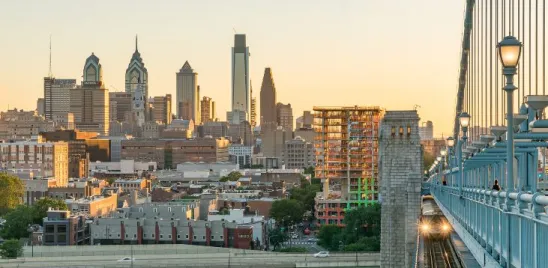Last week, the Pennsylvania Commonwealth Court, an intermediate appellate court, weighed in on whether the City of Philadelphia could remove a statue of Christopher Columbus from public display. In re Appeal of Friends of Marconi Plaza, No. 938 C.D. 2021 (Pa. Commw. Ct. Dec. 9, 2022). This is not a post about that issue, but about the court’s comment on the application of the Pennsylvania Environmental Rights Amendment, Pa. Const. art. I, § 27, to that decision.
The ERA is part of Pennsylvania’s declaration of rights and reads:
The people have a right to clean air [and] pure water, and to the preservation of the natural, scenic, historic and esthetic values of the environment. Pennsylvania’s public natural resources are the common property of all the people, including generations yet to come. As trustee of these resources, the Commonwealth shall conserve and maintain them for the benefit of all the people.
The statue is located in Marconi Plaza, a small city park at the corner of Broad and Oregon Streets in South Philadelphia. Visitors may have driven through it on their way to or from the Sports Complex a few blocks to the south on Broad. The statue was the focus of protests in 2020 after the murder of George Floyd. The City initially covered it with a wooden box, and the Mayor then directed the Historical Commission to begin the process of determining whether to remove and to store it elsewhere.
Two individuals and the Friends of Marconi Plaza, a neighborhood organization that tends to the park, opposed moving the statue primarily on the ground that the City had not provided the 90-day public comment required by “Directive 67.” The trial court agreed, and the City appealed.
In the course of affirming, the Commonwealth Court observed: “Directive 67 protects the public’s interest in works of art, over which the City acts as trustee, by guaranteeing the public a voice in any removal or alteration of a public work of art.” Friends of Marconi Plaza, slip op. at 24. It footnoted that statement with a quotation of the ERA and the further explanation that “[t]his right of people ‘to the preservation of the . . . historic and esthetic values of the environment’ includes municipal parks such as Marconi Plaza.” Id. at 24, n. 13.
The court thus seems to suggest that relatively small, urban green spaces are within the ERA public trust established by the second and third sentences of section 27. The court is not writing about the right to esthetic values protected by the first sentence; the first sentence does not establish a public trust. The court may also mean that the public trust covers marble statues in those spaces, or maybe artwork in every public place, or maybe everything built (like playground equipment) in a green space. The public trust applies only to “public natural resources,” so any of those would reflect a good bit of elasticity in the definition.



 />i
/>i

